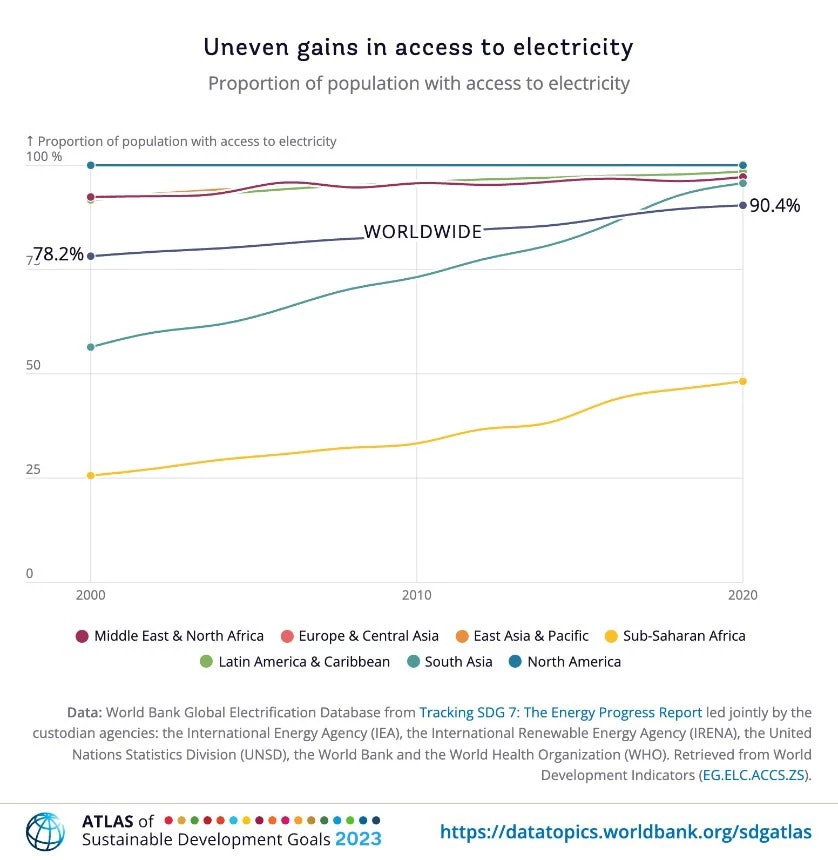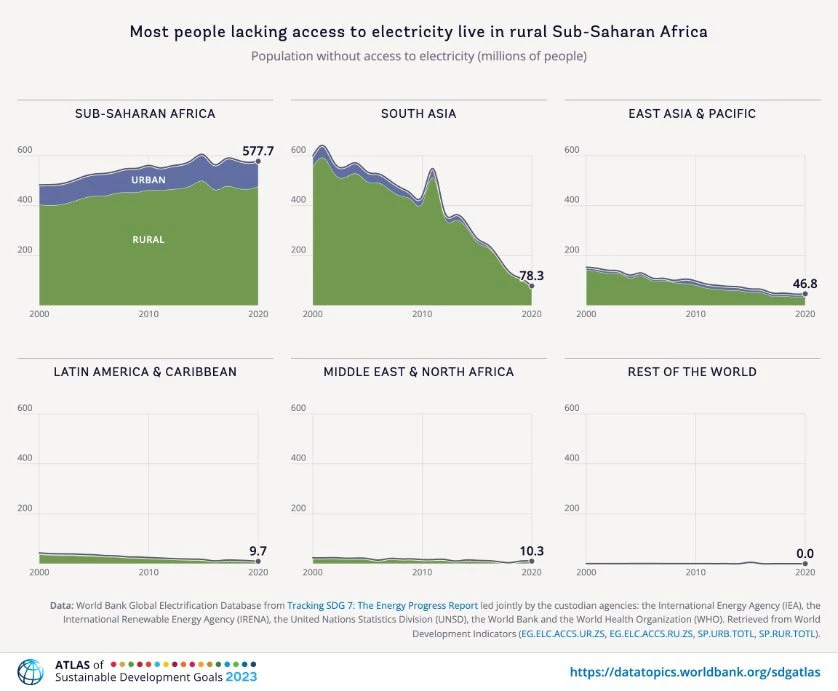SDG 7 aims to ensure access to affordable, reliable, and sustainable energy for all. Globally, about 90 percent of people across the world had access to electricity in 2020—but in some countries the access rate was as low as 19 percent or even lower.
As shown in the above chart, progress towards achieving universal access to electricity (SDG indicator 7.1.1) has been slow over the last 20 years. The share of the global population with access to electricity increased from 78 percent in 2000 to 91 percent in 2020. Based on current trends, this figure is expected to rise only marginally from 91 percent in 2020 to 92 percent by 2030.
South Asia drove most of the gains in the last two decades, rising from 56 percent in 2000 to 96 percent in 2020. Sub-Saharan Africa has also made progress, with electricity access rising from 25 percent in 2000 to 48 percent in 2020. One out of two people in Sub-Saharan Africa lacked access to electricity in 2020, and access in this region would need to more than double by 2030 to meet SDG target 7.1.
Closing the urban-rural gap in low- and lower-middle-income countries, particularly in Sub-Saharan Africa, is key to achieving this target. There is a stark divide in global access to electricity between urban and rural areas. In 2020, 733 million people worldwide lacked access to electricity. Around 80 percent of those lived in rural areas.
This is most evident in Sub-Saharan Africa, where almost 60 percent of people live in rural communities. In this region, the proportion of residents with electricity was 28 percent in rural areas compared to 78 percent in urban areas in 2020. Overall, in Sub-Saharan Africa, approximately 476 million rural residents lack access to electricity.
Explore how stark this urban-rural divide in access to electricity is across the globe through this data visualization of the 2023 Atlas of Sustainable Development Goals.
To learn more about where we stand in our efforts to ensure access to affordable, reliable, and sustainable energy for all, and how this affects greenhouse gas emissions, look at the data stories and visualizations of the seventh story of the Atlas.
This story will be updated with 2021 values in the next few weeks.







Join the Conversation